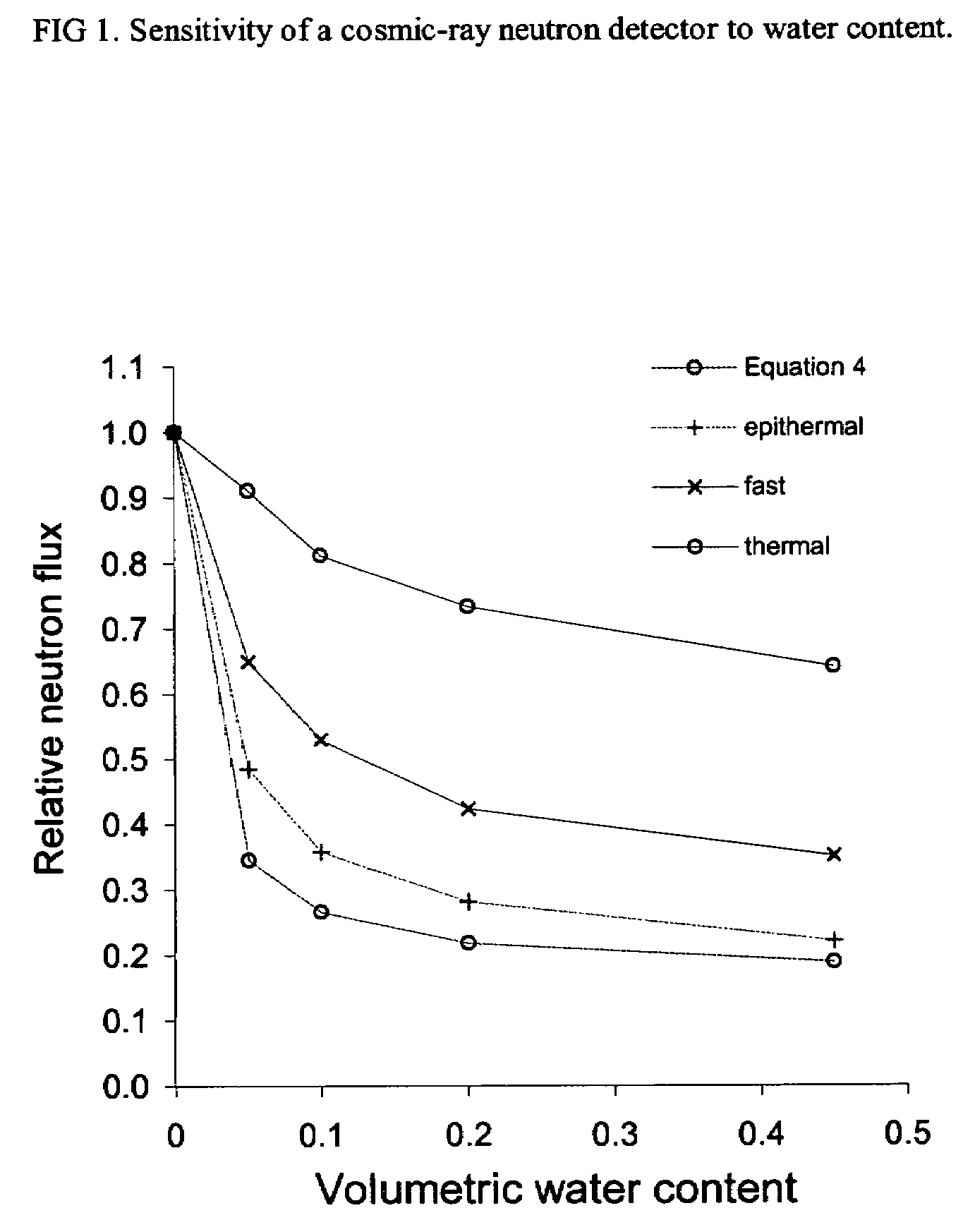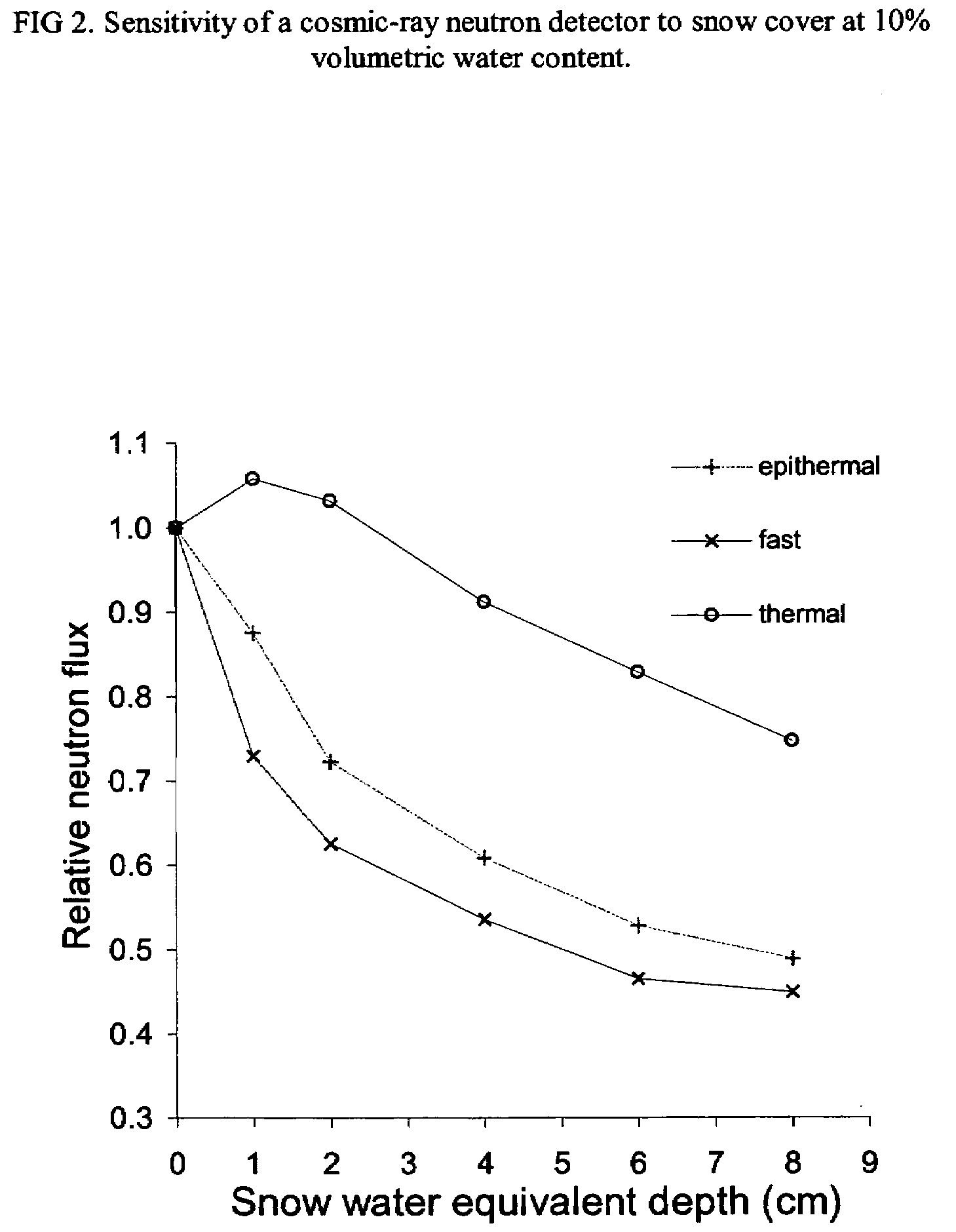Non-invasive method for measuring soil water content or snow water equivalent depth using cosmic-ray neutrons
a technology of cosmic-ray neutrons and soil water, which is applied in the direction of material analysis using radiation diffraction, instruments, measurement devices, etc., can solve the problems of inability to meet the needs of many applications, difficult to obtain accurate snow water equivalent measurements remotely, laborious, expensive and time-consuming gravimetric measurements, etc., to achieve the effect of increasing the rate at which fast neutrons are slowed, reducing energy, and increasing the absorption rate of thermal neutrons
- Summary
- Abstract
- Description
- Claims
- Application Information
AI Technical Summary
Benefits of technology
Problems solved by technology
Method used
Image
Examples
example
Calibration and Test Results
[0038]The present invention was tested in the winter of 2003 at a field site located outside of Tucson, Ariz. Two detectors were located inside of a building at a height of 1 m above the ground. One detector recorded thermal neutrons and the other detector recorded epithermal neutrons. A water content reflectometer, a standard instrument for point measurement of soil water content, was buried at a depth of 10 cm in the soil to measure changes in volumetric water content. The designs of these detectors and of the detection system were as described above and in FIG. 3. Barometric pressure was recorded at the site and the correction given by equation 5 was applied.
[0039]The results of this experiment are shown in FIG. 4. These results show three major dips in neutron count rates, which correspond to three major storms that affected the field site. The first storm, labeled I on FIG. 4, was characterized by low intensity rain, and resulted in corresponding dip...
PUM
 Login to View More
Login to View More Abstract
Description
Claims
Application Information
 Login to View More
Login to View More - R&D
- Intellectual Property
- Life Sciences
- Materials
- Tech Scout
- Unparalleled Data Quality
- Higher Quality Content
- 60% Fewer Hallucinations
Browse by: Latest US Patents, China's latest patents, Technical Efficacy Thesaurus, Application Domain, Technology Topic, Popular Technical Reports.
© 2025 PatSnap. All rights reserved.Legal|Privacy policy|Modern Slavery Act Transparency Statement|Sitemap|About US| Contact US: help@patsnap.com



